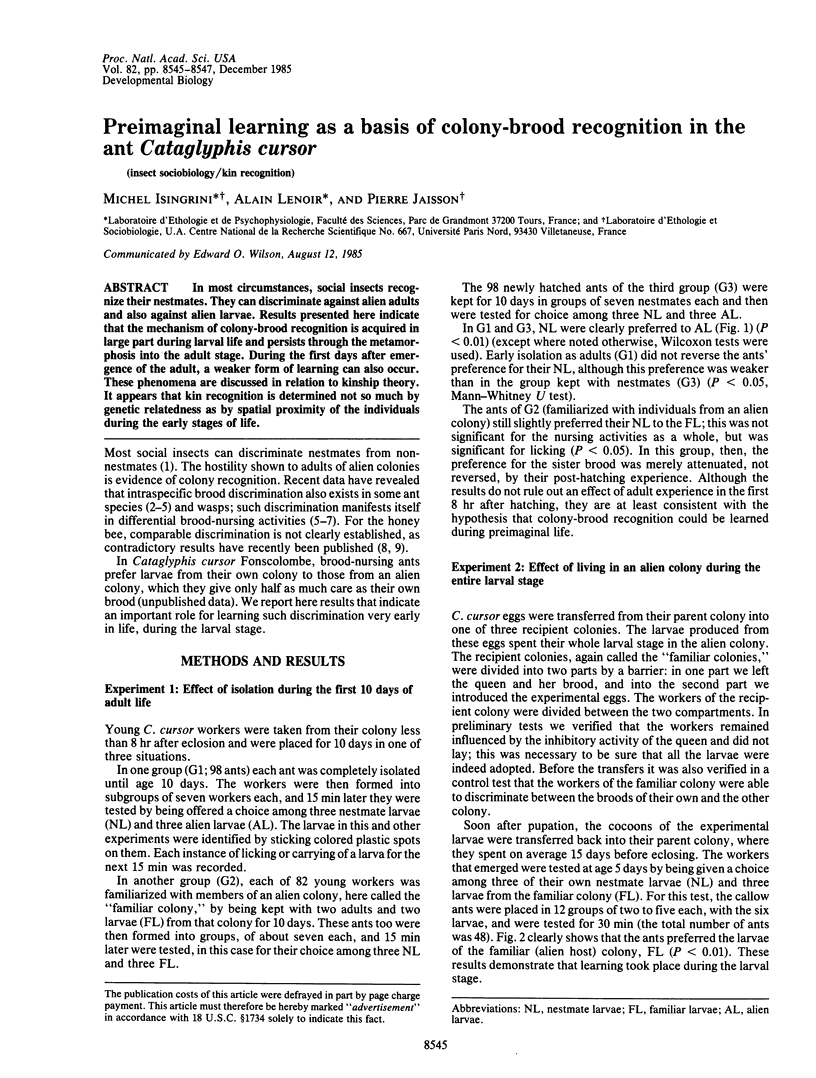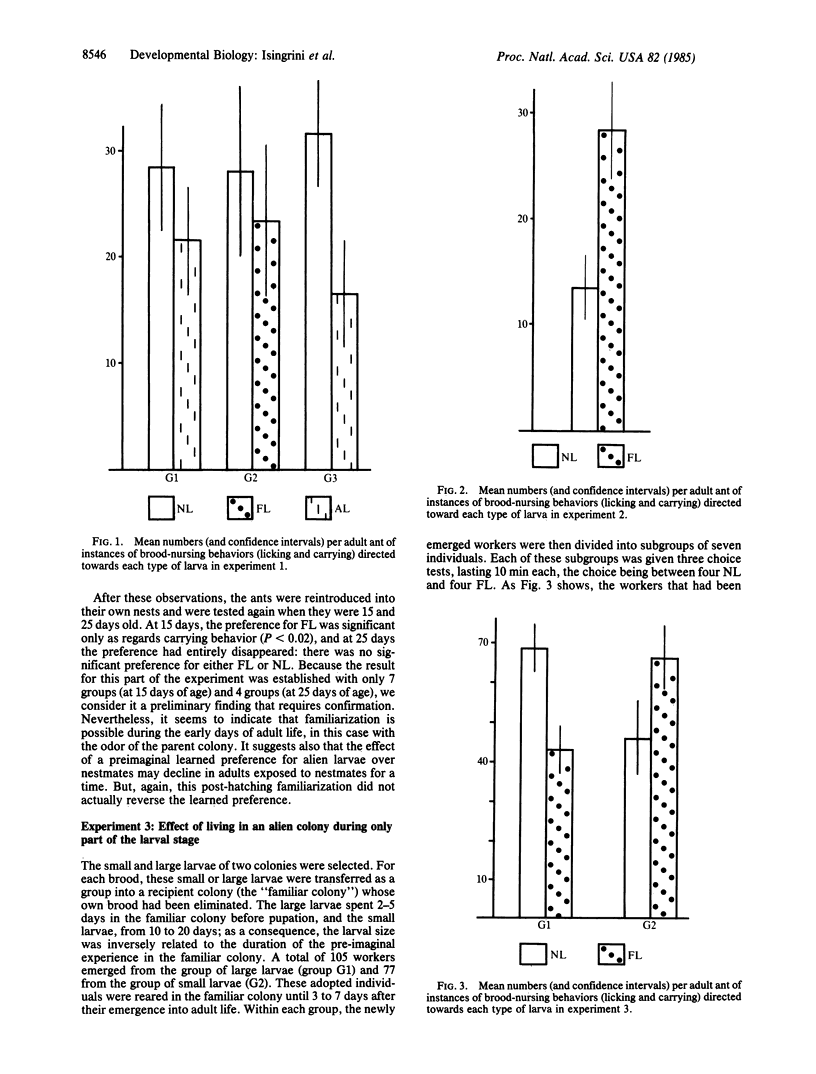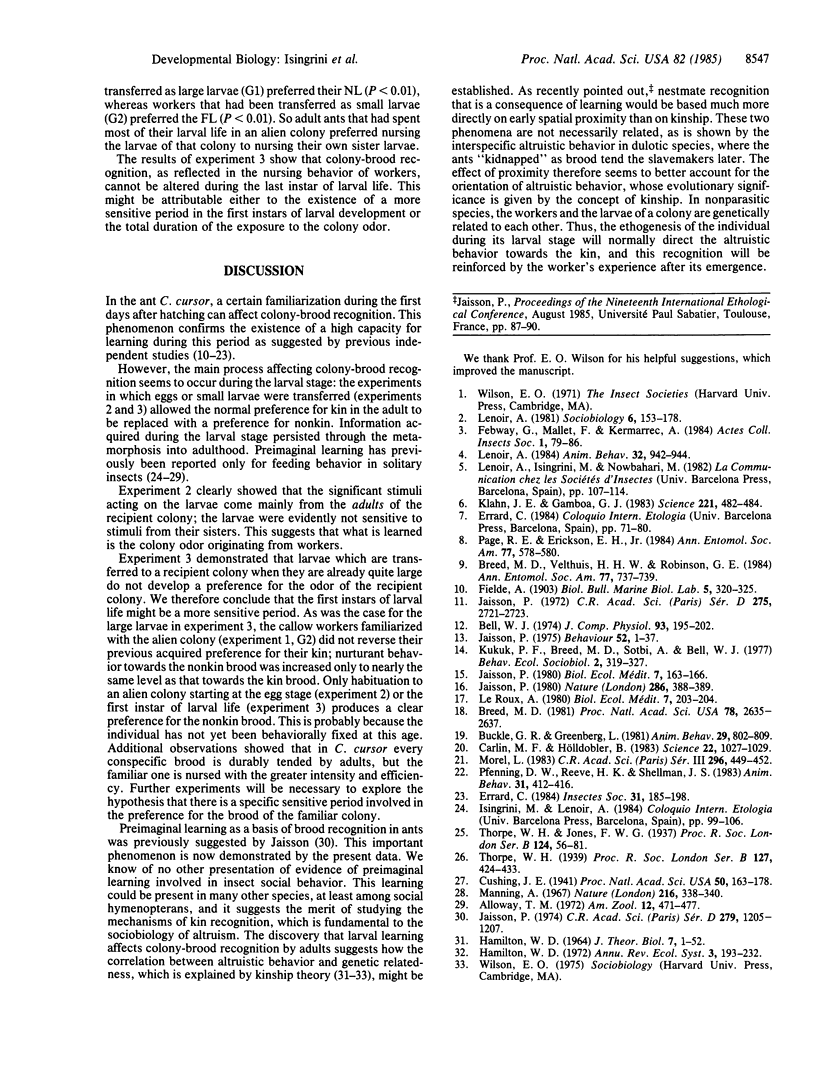Abstract
In most circumstances, social insects recognize their nestmates. They can discriminate against alien adults and also against alien larvae. Results presented here indicate that the mechanism of colony-brood recognition is acquired in large part during larval life and persists through the metamorphosis into the adult stage. During the first days after emergence of the adult, a weaker form of learning can also occur. These phenomena are discussed in relation to kinship theory. It appears that kin recognition is determined not so much by genetic relatedness as by spatial proximity of the individuals during the early stages of life.
Keywords: insect sociobiology, kin recognition
Full text
PDF


Selected References
These references are in PubMed. This may not be the complete list of references from this article.
- Breed M. D. Individual recognition and learning of queen odors by worker honeybees. Proc Natl Acad Sci U S A. 1981 Apr;78(4):2635–2637. doi: 10.1073/pnas.78.4.2635. [DOI] [PMC free article] [PubMed] [Google Scholar]
- Carlin N. F., Hölldobler B. Nestmate and kin recognition in interspecific mixed colonies of ants. Science. 1983 Dec 2;222(4627):1027–1029. doi: 10.1126/science.222.4627.1027. [DOI] [PubMed] [Google Scholar]
- Hamilton W. D. The genetical evolution of social behaviour. II. J Theor Biol. 1964 Jul;7(1):17–52. doi: 10.1016/0022-5193(64)90039-6. [DOI] [PubMed] [Google Scholar]
- Jaisson P. Note préliminaire sur l'ontogenèse du comportement de soin au couvain chez la jeune Fourmi rousse (Formica polyctena Först): rôle d'un mécanisme probable d'imprégnation. C R Acad Sci Hebd Seances Acad Sci D. 1972 Dec 6;275(23):2721–2723. [PubMed] [Google Scholar]
- Klahn J. E., Gamboa G. J. Social wasps: discrimination between kin and nonkin brood. Science. 1983 Jul 29;221(4609):482–484. doi: 10.1126/science.221.4609.482. [DOI] [PubMed] [Google Scholar]
- Mallet A. I., Minnikin D. E., Dobson G. Gas chromatography mass spectrometry of tert-butyldimethylsilyl ethers of phthiocerols and mycocerosic alcohols from Mycobacterium tuberculosis. Biomed Mass Spectrom. 1984 Feb;11(2):79–86. doi: 10.1002/bms.1200110207. [DOI] [PubMed] [Google Scholar]
- Manning A. "Pre-imaginal conditioning" in Drosophila. Nature. 1967 Oct 28;216(5113):338–340. doi: 10.1038/216338a0. [DOI] [PubMed] [Google Scholar]


